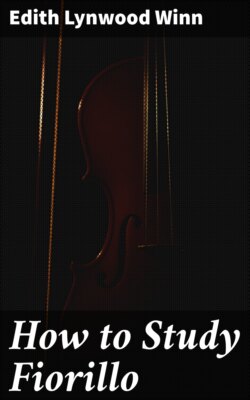Читать книгу How to Study Fiorillo - Edith Lynwood Winn - Страница 11
На сайте Литреса книга снята с продажи.
No. 8.
ОглавлениеTable of Contents
[Listen]
This is a dignified and stately étude which requires very much shading. It is one of the most artistic of all, similar in character to the first part of number one. The teacher may count eight instead of four, if desirable, as we sometimes do in the andante of a Mozart quartet. Give the dotted sixteenth note a little more time, to suit the nature of the work.
Again I would call attention to the second Kreutzer[6] étude, and slow scales with the crescendo and diminuendo four times on one note. Many claim that the vibrato affects the quantity as well as the quality of a tone. At any rate, the vibrato must be used in such works.
Play the 4th, 5th and 6th measures of the first line as indicated.
In the next measure change to before the high G. After the double bar, practice long and faithfully the crescendo note in the 4th position. Do not force the syncopation; use the whole bow. Raise the bow slightly when you have groups of two notes, thus:
(last measure, second line.)
Play the last measure after restez on the A string, going into the 5th position on C♯, and remaining there during the next three measures. Come down to the third position on D. Play the trill in the fifth position. Detach the groups of three notes, slightly raising the bow. Be very careful not to hurry the tempo. The thirty-second notes are played very legato, and the following fingering is preferred:
[Listen]
